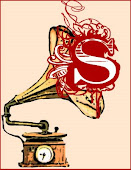
The third and final part of my Miles Davis trilogy.. many thanks to those of you who've provided such entertaining commentary to the last two instalments, I've enjoyed it a lot. I've stayed in the sixties for number three, in an attempt to give the series a sense of coherence, although it has to be said I'm leaving out a huge body of work both before and after the ten years I've covered here.
I've picked a slower track this time, and one with a particular resonance for Miles Davis: "Mademoiselle Mabry" is named for Betty Mabry, who married Miles in 1968 and whose image was printed on the cover of the album, Filles de Kilimanjaro.
The marriage was short lived, however; following their divorce a year later Betty retained the surname Davis and began her own musical career.
She knew Jimi Hendrix and introduced Miles to rock and R&B, as well as changing his wardrobe, his style, and his musical taste. Excited by the new music he was hearing, and having more or less exhausted his excursions into jazz abstraction after 4 years of relentless exploration, Miles gradually began introducing electric instruments to the lineup.
Davis had been aware of Joe Zawinul's work on Fender Rhodes for the highly successful Cannonball Adderley quintet, as well as admiring Hendrix's band, and wanted to introduce more of a contemporary, R&B sound to his own band. He was also motivated by the desire to attract young, African-American fans, who had been increasingly absent from his concerts in the mid- to late sixties.
Contemporary critics who saw his experimentation with electric instruments as a "sell out" were wide of the mark- Miles was simply seeking new ground to break, having gone as far as he could with acoustic instruments.
"M. Mabry" begins with the rhythm instruments, electric piano, bass and drums repeating a written score three times, while the horns remain silent; this is already quite different to the standard jazz structure, where the horns carry the melody and the rhythm instruments perform a backing role.
Davis begins his solo without any reference to the theme; his playing is enormously expressive and playful, the tone of the horn as varied as a human voice.
Wayne Shorter continues with his characteristic arpeggios, developing an appealing vulnerability as his melodic lines take him into the upper registers of the horn.
Chick Corea, on electric piano, gets a chance to break out of his proscribed role as the piece develops into a long, languid, R&B tinged jam. The backing is sparse, with subtle tempo variations and the recurring three note motif offering enough time and space for the soloists to develop their ideas into extremely lyrical statements.
The music has a wonderfully relaxed feel: the rhythm section is far more constrained and quiet than it was in Freedom Jazz Dance- rather than spontaneous interaction, this piece is more about establishing a mood and making an emotional statement, although there is still room for some very fine, responsive drumming by Tony Williams in the second half of the piece.
Looking back to the two earlier pieces, perhaps "Milestones" and "Freedom Jazz Dance" can be best appreciated in terms of their complexity, balance, and contrast, rather in the sense of a seashell, or a city; they are probably quite difficult to comprehend at first listen.
In comparison, "Mademoiselle Mabry" is more sensual and evocative, like the caress of a lover, or the feel of water on your skin- it leaves a more immediate impression, although repeated listening is also rewarding.
Miles went on to produce the ethereal perfection of "In a silent way", before the band switched tack and charged into the occult, funky rawness of "Bitches Brew". In 1970 his band played the Isle of Wight festival, and the transformation was complete- until shortly before his death, he would never revisit his acoustic period.
Mademoiselle Mabry
As an aside, the theme of Mademoiselle Mabry has a certain affinity with
The Wind Cries Mary, by Jimi Hendrix.









